The use of artistic forging is an indicator of the well-being and uniqueness of almost any design. The use of forging for the design of stairs is no exception. The most widespread is the use of forging in the design of handrails.
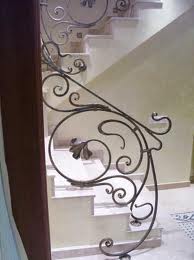
General information
Almost all modern cottages have various staircases that cannot be imagined without railings.
Forged stair railings perform several functions:
- Provides safety when moving up the stairs. Their importance is especially irreplaceable in the presence of small children or elderly people in the house;

- They are an excellent decorative decoration for any home, completely changing the interior and giving it sophistication and charm.

Note! When sharing a ladder with young children, be sure to consult on the choice of a safe railing design. But in this case, large holes and gaps between decorative elements should definitely be avoided.
It is very important to choose the right handrail. Of course, you can make and install them with your own hands, but it is better to trust the professionals in this matter. Nowadays, forged railings for stairs are gaining more and more popularity, allowing to embody any design idea.
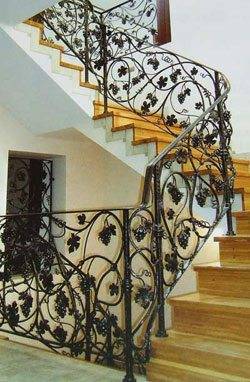
Manufacturing methods
There are several ways to make:
- By cold forging... When using this method, the material of the railing itself is not subjected to heating, but is processed by a special machine or by hand. Patterns are obtained by processing metal with an angle grinder and welding individual elements into a single system. The cost of such railings is quite low;
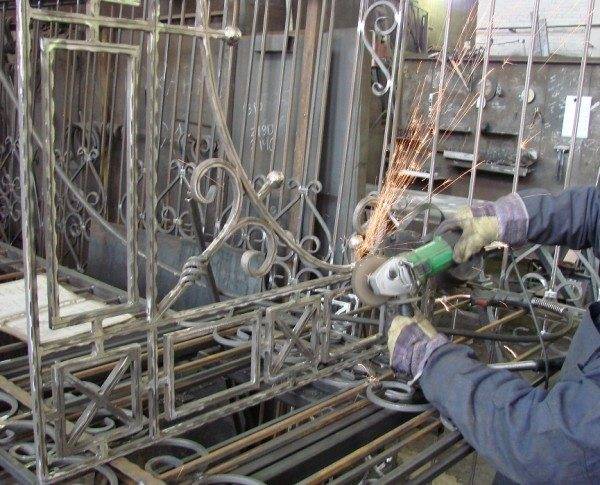
- By hot forging... When using this method, the material of the railing is heated in a forge and processed with special tools. Most often, steel is used as a raw material for this method.
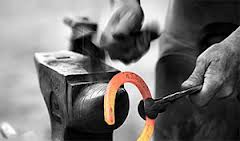
Manufacturing technology
The manufacturing technology of forged railings includes several stages:
- giving the railing the required shape by cold or hot forging;
- fastening to the finished frame of decorative elements;
- processing of the finished ensemble with a protective coating.
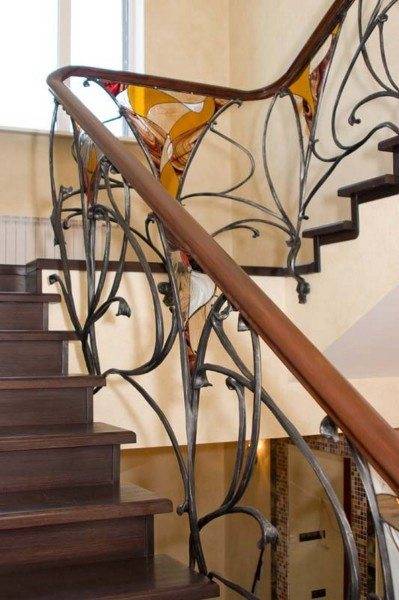
Advice! For fencing, choose a rust-preventing paint, preferably acrylic. Before the next painting, it is imperative to remove traces of corrosion, which will allow you to get a longer lasting effect.
Applicable materials
The main material for the frame is naturally steel, but for the manufacture of decorative elements they can use:
- bronze;
- copper;
- aluminum;
- titanium;
- various polymers that simulate forging.
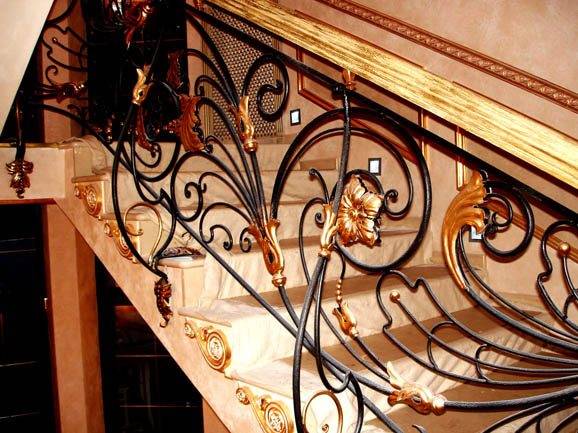
Railing types
Forged stair railings can be perfectly combined with finishing materials such as:
- marble (read also the article Marble stairs - beauty and reliability);
- granite;
- natural stone;
- tile;
- wood.
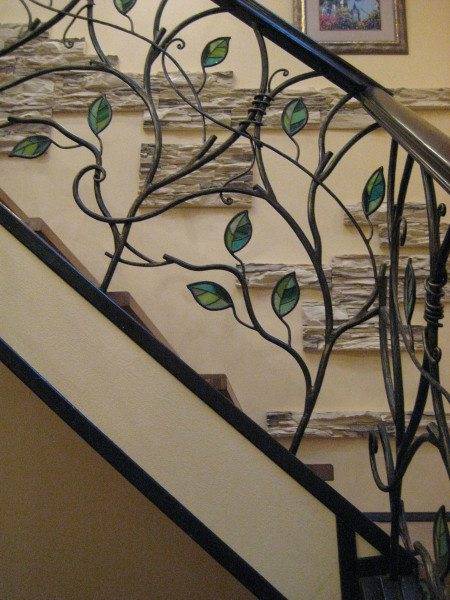
By their appearance, they can be divided into the following types:
- Straight lines that are installed in completely open areas between spans... They are mounted on one or two sides. The perimeter of the railing looks solid;
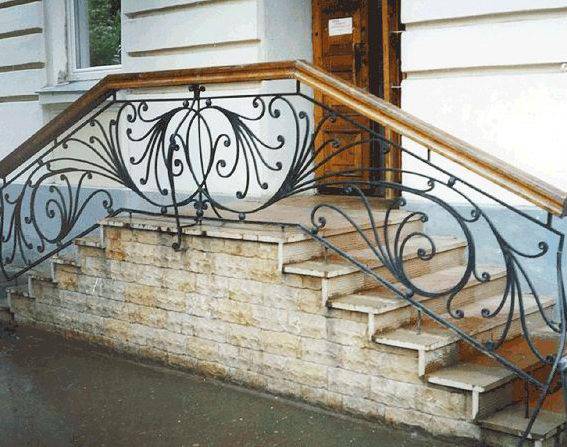
- Oblique, which are mounted on the stairs itself... In this case, the fence line itself runs parallel to the steps, and the drawing is directed vertically. The style of straight and oblique railing can be the same, even if the shape is different;
- Corner, which are mounted between spans, when the staircase is open on both sides and is adjacent to the corner... You should choose a suitable angle of inclination in order to use such an element as safely and comfortably as possible.

Railing styles
Over the centuries that a person uses wrought iron railings, many different styles have developed.
Here are just a few of them that are in greatest demand and popularity:
- minimalism style... This style implies emphasizing the beauty of metal, both externally and internally. Particular attention is paid to colors and their combinations. Modern trends imply the use of black as the main color and gilding for decoration;
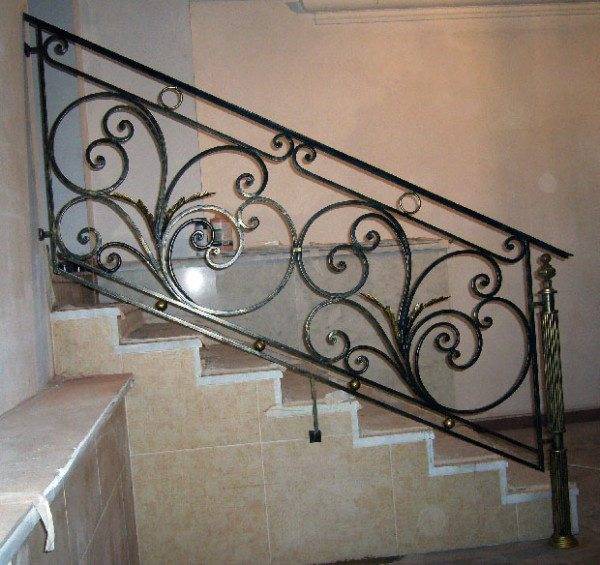
- style - modern... The staircase made in this style is a work of art, and the railings in this style will completely immerse you in the world of fairy tales and mystery;
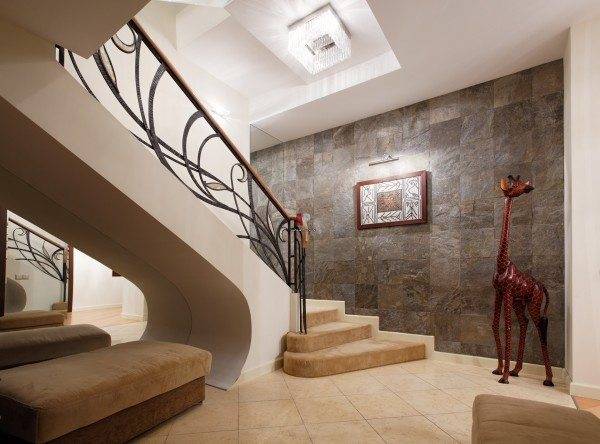
- Renaissance... A distinctive feature of this style is the predominance of such decorative elements as plant leaves, wreaths, garlands, vases. All these elements are woven into intricate patterns, forming a complete composition;
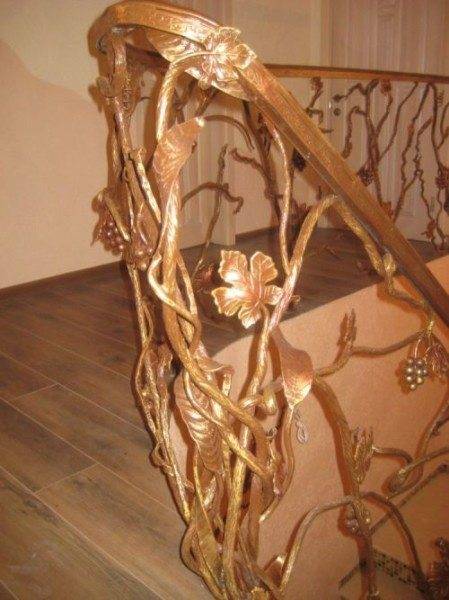
- baroque, rococo... Only the most experienced and talented blacksmiths can make forging in this style. A feature of this style is the asymmetry of the pattern, refined lines of patterns and complex ligature;

- combined... This style is also called postmodern. As the name implies, the main styles are mixed in various variations. A sense of proportion and a complete understanding of the harmony of various elements is important in this style.

To get a decent result, it is better to consult with designers of various directions.
Advantages
Forged fences can be a great investment for any home.
The main advantages of this design include:
- grace and beauty;
- durability. They are almost impossible to break. Rather, boredom of one style in the house will occur, than such railings will break or lose their appearance;
- small thickness. This parameter allows you to mount a wrought-iron stair railing even on narrow stairs without losing usable space;
- the uniqueness of the picture. By ordering a drawing according to your individual design and style, you will receive a unique design that no one else in the world will have.

Price
The price of the product depends on the following data:
- frame material;
- the cost of installation work;
- finishing and painting material.

The most commonly used material for forged fencing are:
- rod 12 × 12 mm;
- for welded fences, a rod of 10 × 10 mm and a strip of 4 × 20 mm;
- a pipe with a diameter of 56 mm or 47 mm is used as racks.
The approximate cost of forged fences ranges from 2,100 rubles to 21,000 rubles per running meter. For welded products, the price varies from 1800 to 3500 rubles per meter.

Manufacturing to order
The order of work in the case of an individual order in different companies is slightly different, but the basic principles remain the same.
Approximate instructions for action:
- the customer independently chooses the appropriate type of product according to the company's catalog;
- a measurer comes to the customer's house and takes all the necessary measurements. In addition to measurements, the company's specialist must definitely determine the need to use additional materials when installing the finished structure;
- a preliminary calculation of the cost of the product is carried out, with the mutual agreement of the parties, payment is made;
- in the presence of a finished design drawing, the company starts manufacturing with the consent of the customer;
- upon the conclusion of the corresponding contract, the installation team leaves for the installation site.
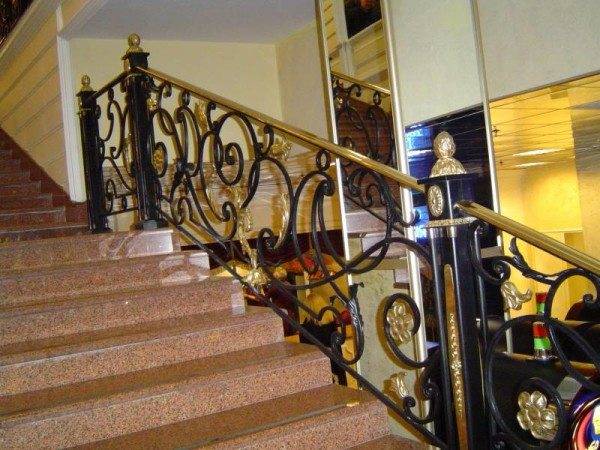
The use of modern technologies can significantly speed up the implementation of projects of almost any complexity.Similar projects can be implemented in the yard or on the street, there is no difference for the organization for the manufacture of forged products.

Output
Forged fences will make any home unique and refined. The choice of style and design is completely individual. In the video presented in this article, you will find additional information on this topic.






